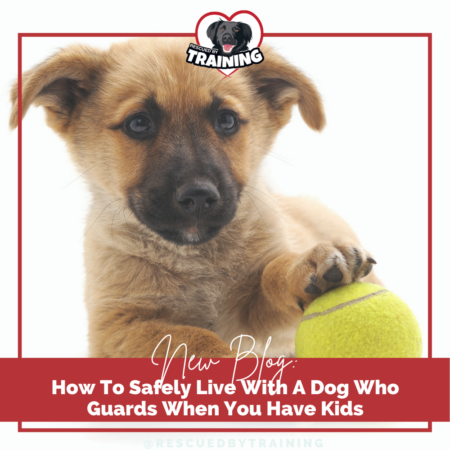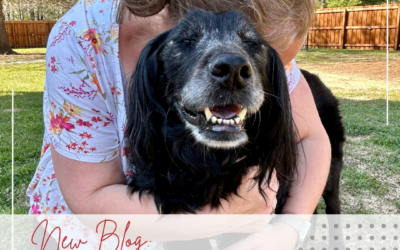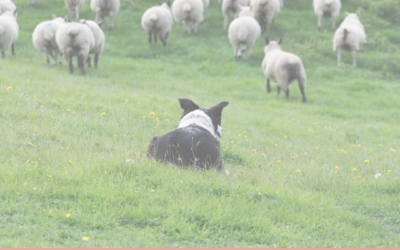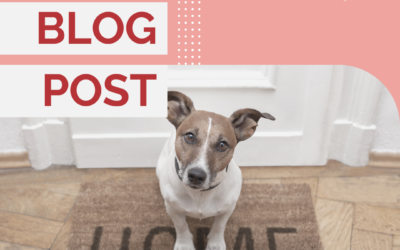You’re expecting a baby or your baby is starting to crawl or toddle. This is an exciting time but if you have a dog who resource guards food, toys, bones or resting spots, you’re likely feeling nervous or scared the the dog might hurt our child. This is a healthy fear and something that needs to be addressed and planned for.
Now is the time to schedule a one on one pre-baby prep session to help prepare your dog (and you!) for the big changes ahead once the baby arrives and make your dog safer to be around. As a licensed Family Paws Parent Educator and a certified behavior consultant and trainer whose speciality is fear and aggression, I work with a lot of families with dogs and kids. And experience tells me, it’s always better to be proactive than reactive.,
Resource guarder or not, to safely have dogs and kids living together requires an understanding of your dog’s body language, supervision, management, planning and training. There’s a lot of well-meaning, but misguided information out there on best practices for introducing dogs and babies. My free guide, 10 Dos and Don’ts When Introducing Your Dog to Your New Baby is a great start to give you some guidance. You can also check out my multi-part blog series, Bringing Home Baby and my resource guarding series.
Don’t fret if you already have a baby or toddler. There’s still hope.
Here’s 6 ways to keep everyone safe:
1. Learn your dog’s body language, including subtle signals when they’re stressed, anxious or fearful. This is the most important thing you can do. If you don’t know when your dog is uncomfortable, you won’t know how or when to help them. Don’t wait for your dog to be growling, biting or lunging to know he’s upset. Download my free Dog Communication handout here.
2. Practice separation where your dog is separated with a gate or in another room while they have their food, high value chews or toys. They don’t need to be behind a closed door and isolated, but you do want a physical barrier, like a baby gate separating the dog and child. Management provides a way to give your dog enrichment, chews and meals safely. As training progresses and your child gets older, we may be able to loosen up management a bit later on, but initially management keeps your dog and your child both safe.
3. Never punish the dog for growling or communicating. I get it. Growling can be very upsetting and scary, especially if our beloved dog is growling at our child and often our knee-jerk reaction is to yell “no” to the dog, in an attempt to stop this “undesirable” behavior. But, this will just make things worse.
4. Train your dog. Follow a structured, incremental training plan under the guidance of a qualified behavior consultant. At its core, resource guarding is fear based. The dog is afraid of losing possession or access to something he thinks is valuable. An effective training plan will help teach the dog to like having stuff taken away. When we change how the dog feels, then there’s no reason for him to growl or try to bite. Training takes time but working with a qualified trainer will make sure you’re doing things correctly. With this type of training, the devil’s in the details, so it’s important you do it right or it could be ineffective or make things worse. Also, it’s worth noting that even with training, that doesn’t mean your child should walk up and take stuff away from your dog. Kids should be Santa to your dog – givers, never takers. A familiar, trusted adult is safer to dogs than a stranger or child. So while you may be able to take things away from your dog, your child never should.
5. Train your child. That’s right, this isn’t 100% on the dog. We cannot expect dogs to just tolerate what we throw at them. This means teaching your child age appropriate interactions and basic rules like when Fluffy has something or is resting to not approach.
6. Supervise interactions. What do I mean by supervise? The Family Paws handout The 5 Types of Supervision is a great graphic to understand the different types of supervision. Supervision isn’t just being physically in a room – it’s being fully engaged, aware and interacting with dog and child. We can also incorporate age-appropriate games and ways to help create positive associations for your dog to your child but all of these interactions need to be supervised and controlled. For babies this might mean using parent guided touch, where your baby’s hand cupped inside of yours, to help your baby pet your dog. For toddlers we might incorporate something like kibble fetch, where your toddler tosses a few pieces of kibble across the room or into the grass for your dog to find. A qualified trainer will help guide you on what is safe and what will help your dog learn to make positive associations with your child.
Dogs, even resource guarders, can safely live with kids. We just need to ensure we’re taking all the steps possible to keep everyone safe, happy and healthy.
Resource guarding is a complex behavior issue that requires positive behavior modification so if your dog is a guarder and you need help, you can set up a one on one fear and aggression consult to learn how to help them.
Happy training!
![]()




